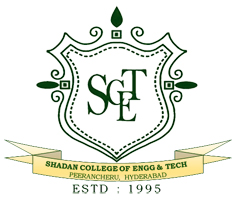Criteria 2- Teaching- Learning and Evaluation (350)
Key Indicator- 2.1 Student Enrolment and Profile (40)
| Metric No. |
Description |
Download View |
| 2.1.1. | Average Enrolment percentage (Average of last five years)
2.1.1.1. Number of students admitted year wise during last five years 2.1.1.2. Number of sanctioned seats year wise during last five years |
|
| 2.1.2.
|
Average percentage of seats filled against seats reserved for various categories (SC, ST, OBC, Divyangjan, etc. as per applicable reservation policy) during the last five years
( exclusive of supernumerary seats) 2.1.2.1. Number of actual students admitted from the reserved categories year wise during last five years |
Key Indicator- 2.2. Catering to Student Diversity (50)
| Metric No. | ||
| 2.2.1. | The institution assesses the learning levels of the students and organises special Programmes for advanced learners and slow learners | |
| 2.2.2. | Student- Full time teacher ratio (Data for the latest completed academic year) |
– |
Key Indicator- 2.3. Teaching- Learning Process (50)
| Metric No. | ||
| 2.3.1. | Student centric methods, such as experiential learning, participative learning and problem solving methodologies are used for enhancing learning experience | |
| 2.3.2. | Teachers use ICT enabled tools for effective teaching-learning process. | |
| 2.3.3. | Ratio of mentor to students for academic and other related issues (Data for the latest completed academic year )
2.3.3.1 Number of mentors Number of students assigned to each Mentor |
– |
Key Indicator- 2.4 Teacher Profile and Quality (60)
| Metric No. | ||
| 2.4.1. | Average percentage of full time teachers against sanctioned posts during the last five years |
– |
| 2.4.2. | Average percentage of full time teachers with Ph. D. / D.M. / M.Ch. / D.N.B Superspeciality / D.Sc. / D.Litt. during the last five years (consider only highest degree for count)
2.4.2.1. Number of full time teachers with Ph. D. / D.M. / M.Ch. / D.N.B Superspeciality / D.Sc. / D.Litt. year wise during the last five years |
|
| 2.4.3. | Average teaching experience of full time teachers in the same institution (Data for the latest completed academic year in number of years)
2.4.3.1: Total experience of full-time teachers |
Key Indicator- 2.5. Evaluation Process and Reforms (30)
| Metric No. | ||
| 2.5.1. | Mechanism of internal assessment is transparent and robust in terms of frequency and mode | |
| 2.5.2. | Mechanism to deal with internal/external examination related grievances is transparent, time- bound and efficient |
Key Indicator- 2.6 Student Performance and Learning Outcomes (60)
| Metric No. | ||
| 2.6.1. | Programme and course outcomes for all Programmes offered by the institution are stated and displayed on website and communicated to teachers and students. | |
| 2.6.2. | Attainment of programme outcomes and course outcomes are evaluated by the institution. | |
| 2.6.3.
|
Average pass percentage of Students during last five years
2.6.3.1. Total number of final year students who passed the university examination year wise during the last five years 2.6.3.2. Total number of final year students who appeared for the university examination year wise during the last five years |
Key Indicator- 2.7 Student Satisfaction Survey (60)
| Metric No. | ||
| 2.7.1. | Online student satisfaction survey regarding to teaching learning process. |
– |


